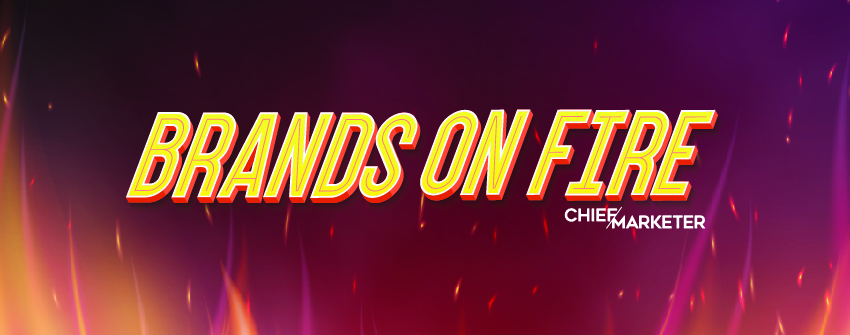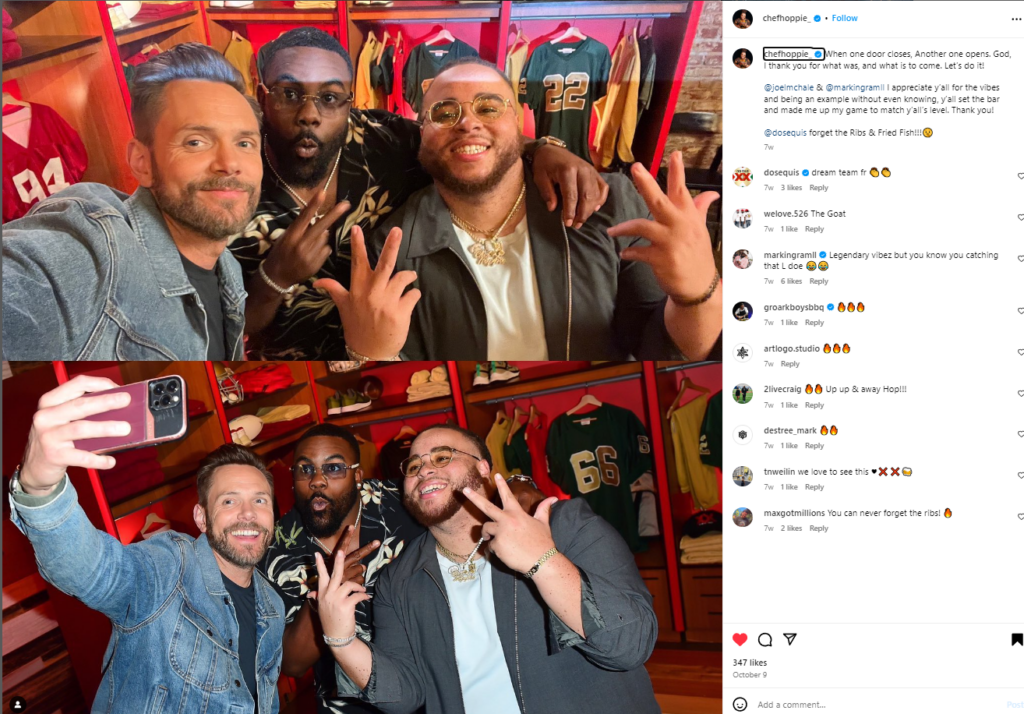
Dos Equis is a brand primarily known for its advertising, notably “The Most Interesting Man in the World” campaign, featuring the fantastic exploits of a sophisticated older gentleman and a catchphrase—”Stay thirsty, my friends”—that spread through internet meme culture like wildfire.
But according to Heineken USA CMO Jonnie Cahill, being an advertising-led brand wasn’t enough. “That’s a beautiful place to be, and we continue to deliver strong advertising into the market,” he told Chief Marketer. “But we also realized we needed to show up more at passion points for people, in the things and the places that matter to them throughout the year, so that they could also experience the brand.”
Enter the Dos Equis College Football Tailgate Throwdown campaign from this past fall, comprised of multiple on-the-ground activations, limited-edition products, university collabs, a broadcast partnership with FOX, and a contest in which fans dreamt up their ideal tailgate experiences. We spoke with Cahill about the campaign’s marketing goals and KPIs met; the strategic thinking behind targeting consumers in the Sun Belt region; the brand’s evolving marketing mix; and planned investments for 2024.
Chief Marketer: What was the impetus behind the College Football Tailgate Throwdown?
Jonnie Cahill, CMO at Heineken USA: The brand has been historically very famous for its advertising. It was one of those few that, [regarding] its marketing mix, is an advertising-led brand. And that’s a beautiful place to be, and we continue to deliver strong advertising into the market. But we also realized we needed to show up more at passion points for people in the things and the places that matter to them throughout the year, so that they could also experience the brand, as part of the enjoyment of life and those everyday occasions.
CM: Why go with college football?
JC: If we go up a level, our company purpose is the joy of true togetherness. And I don’t know of anything maybe more than college football on Saturdays in the U.S. that represents that. There’s passion in many sports around the world, but it’s passion plus friendship plus joy. It’s a sacred thing.
We saw that the metrics on college football were growing in terms of attendances and engagement, whether it’s Google search, whether it’s viewership of Fox Big Noon kickoff, where we’re a partner, attendances at games, all up—with an ever-more diverse audience as well. Younger, more females, more multicultural—a positive set of trends in the sport. So, combining our desire to drive broad reach and show up at the passion points of consumers, and to an extent our purpose as an organization—bringing people together to celebrate togetherness—it was this perfect, Venn diagram of opportunity.

CM: How do your marketing programs differ now?
JC: If you go back, we used to be a partner of the national championships. That was more advertising-led, where the brand shows up on TV and big moments. We’ve transitioned to that broadcast partnership with Fox plus a more hands-on, activation-led approach to make sure that we’re physically there in those stadiums, at those tailgates and in those bars on Friday nights. And the Tailgate Throwdown celebrated that sense of togetherness at a favorite activity: college football. So much so, that 33 percent of people don’t even go to the game after having been at the tailgate. There’s a cohort who even prefer it.
CM: How long has the brand been moving toward this activation-led strategy?
JC: We’ve been activating for three years, since we leaned in with Big Noon Kickoff and Fox. We’ve been working with them on tours of stadiums, showing up at their Big Noon Kickoff games and activating the brand in those cities and towns where the games are taking place.

CM: And how about the marketing mix? Where are you showing up in that regard?
JC: You’re looking for balance in your brand activation. And because Dos Equis has such high residual awareness, don’t need people to see the logo. We need people to experience the brand and to feel our tone of voice, which is fun and engaging, witty and a little bit mysterious. So, that was partnering with [sports journalist] Charlotte Wilder with Fox on [road trip] tours a year ago, or the Tailgate Throwdown, where we’re offering people the chance to design the ultimate tailgate. [We asked people,] what do you want? Which was terrifying for my brand colleagues and my brand teams. I said, well, we’re going to give them the opportunity to have whatever, and really have some fun with that.
Also, why we’re doing that: When you look at the landscape of college football because of those underlying metrics, it’s a super crowded space, whether that’s Lexus or Cheez-Its or Dr. Pepper or Home Depot, or us. When we are not as big a brand as many of the brands that are activated—Coca-Cola did a huge activation recently, for instance—we have a unique opportunity as a beer brand to bring it to life in the environment of the game. Because we live naturally in that tailgate moment. In a TV ad break, it’s a budget war. And that might not be always a war that we can win. So we want to work harder, try harder, and really do both—the big media deployments, the big partnerships, and those day-to-day experiences on the brand.
CM: What do you mean by “residual awareness?”
JC: We have extremely high spontaneous and prompted awareness on the brand. It’s not declining; it’s not old awareness. Its current awareness numbers are really high. But awareness also can be quite passive, for any brand. I’m aware of lots of brands that I either don’t use or I admire, but we’ll never use. I’m aware of Aston Martin. I don’t have one. For us, it’s about touching all of the elements of the mix so that we drive disproportionate equity. It’s awareness plus differentiation and meaningfulness. You want the brand to be meaningful, not just salient. So, you can be big and you can buy bigness, but we also want people to really interact and to feel what the brand stands for and how much fun we are. And I think that’s the piece we’re layering on, rather than simply tripling down on more and more awareness. It’s awareness plus engagement.

CM: How are you measuring that? And what’s going to make it a success?
JC: We looked at the overall awareness of the brand, which has risen… But that’s not the only goal. We saw 13 percent increase in purchase intent for consumers who’d engage with the program. You typically see mid-single digit increases in purchase intent. We see, as you would expect, all of the social measures that we track for engagement, whether that’s video completion rates, AVOC [Audible and Visible On Complete], all of those proxy metrics for, is this content being consumed? Is it being consumed with quality? Are people sticking with it? Are they engaging? Are they commenting?
So, our social metrics were really positive on this, too. Because you have a very simple concept, which is effectively “Shark Tank” for tailgates, but brought to you by a beer brand who promised you they’ll deliver whatever it is you want. I mean, [within reason] for safety, and so on. We saw an uptick in awareness, purchase intent and social metrics. Then ultimately, we’ll track sales volume and market share, but there’s more lag on that in our business because we’re disaggregated a little bit from our consumer. With a Verizon or an AT&T, they know this afternoon if it’s working, whereas we’re seeing that flow through now at the moment with customer feedback.
These tentpole PR-driven experiential events are time consuming. They’re difficult. It’s much easier to buy more GRPs [gross ratings points]. Philosophically, we believe in both, but it takes a lot of workload to pull this stuff off. We’re in the bars on Friday nights in college towns and bringing former players and celebrities to do match analysis and game talks. We’re on the ground at the tailgate. It’s a full end-to-end thing. CMOs and brands talk about fully-integrated campaigns—and that is, we believe, the way to go—but they are difficult to pull off because it takes a lot of energy and effort and weekends on the road. I’m very grateful for the team for leaning in on this one.
CM: Let’s talk about marketing spend for 2024. How will it shift?
JC: Next year we have a significant increase in spend behind Dos Equis. We will expect to see increased consumer-facing media investment in the region of 20 percent next year and probably an overall brand increase in the mid-double digits. We are continuing to activate in college football and through advertising and at our partner events around the country, like the Balloon Festival in Albuquerque. We have 11 partnerships with college schools.
CM: And next year’s marketing mix?
JC: We continue to see a strong investment in broadcast and linear TV as a base layer to drive awareness, but more increase in digital. The enablement of DCO [Dynamic Creative Optimization] via martech has allowed us to customize thousands and thousands of highly-targeted messages to consumers throughout the year. So, more digital, more direct-to-consumer communication. As we move towards a cookie-less world, we are amassing more and more relationships with consumers. And our belief is that if they are prepared to give us their data, we have to respect that with quality creative, and not just use the data you’ve given us.
There is a geographical mix shift as well. Brand is disproportionately strong in the Sun Belt, Texas, New Mexico, Arizona, Oklahoma, and Florida and California as well. But the core central Sun Belt is very important to us. And we will see a significant step up in local media in those key markets. Traditionally when we do ROI analysis, the brand has been very responsive to local media. We’re excited to put material investment into those states next year to see if we can light this thing up.
CM: So you’re targeting the Sun Belt region specifically because college football is so popular there?
JC: There’s a few reasons, actually. In beer, you always go back to product. And product is linked to climate. Dos Equis is actually an excellent beer, with a highly refreshing profile, so it naturally fits for a region where the climate is so warm. We then have the Mexican heritage, obviously. But while Mexican beer brands are growing in the beer market in general, of course, Mexican culture is a critical part of Sun Belt culture. There’s a natural overlap there. Furthermore, it was a historic area of market share strength for us. So, you are building from a base. You’ve got culture, you’ve got a strong base, and you’ve got a great beer.
What we also see is the demographic changes that are taking place in the Sun Belt as it grows as a region. Take Texas, just as an example: The inflow of net migration into the Sun Belt continues at pace. That is a consumer who’s particularly highly-indexed towards the Dos Equis brand. But we also have net inbound migration. The cities that are growing are excellent cities for Dos Equis. And the people who are coming to those cities are very interested in the brand—places like Dallas, Austin and San Antonio—and where we have huge “on trade” presence, which is always a very nice barometer of brand health in beer. How are you doing in the bars when people have so much choice?
We are having a strong year in the “on trade” in Texas, for example, as more and more people electively choose the brand. So, it’s a little bit the history, a little bit demographics. But to win with this brand and to win in this business at the moment, the Sun Belt is going to be a key battleground not only for our brand, but for many brands in the category.